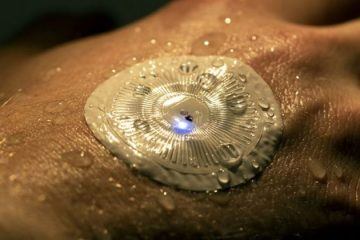Jack Carfagno in Doc Wire News:
 Wearable technologies offer a convenient means of monitoring many physiological features, presenting a multitude of medical solutions. Not only are these devices easy for the consumer to use, but they offer real-time data for physicians to analyze as well. From the Apple Watch’s EKG capabilities to new continuous glucose monitoring systems, wearable medical technologies have a wide range of potential applications in healthcare. Below, DocWire News has compiled five of the top innovations in wearable technologies this year plus a few new use cases for the Apple Watch.
Wearable technologies offer a convenient means of monitoring many physiological features, presenting a multitude of medical solutions. Not only are these devices easy for the consumer to use, but they offer real-time data for physicians to analyze as well. From the Apple Watch’s EKG capabilities to new continuous glucose monitoring systems, wearable medical technologies have a wide range of potential applications in healthcare. Below, DocWire News has compiled five of the top innovations in wearable technologies this year plus a few new use cases for the Apple Watch.
Wearable Sweat-Sensor Informs Athletes of Water and Electrolyte Loss: A group of researchers have recently developed a waterproof, bandage-like sweat sensor that tells the wearer when to replenish electrolytes and fluids. This innovative patch collects and analyzes athlete’s perspiration as they exercise in any environment – even swimming. Described in Science Advances, the patch contains tiny pores on it’s underside that allow the sweat to penetrate the device. Each of these holes contains its own sweat analysis technology, each testing various metrics to analyze if the wearer needs hydration or electrolytes.
Walking Data from Wearables Predicting Alzheimer’s Disease: One area of impairment in patients with Alzheimer’s disease is walking mechanics, or gait. Gait speed, symmetry, and stride length are typically reduced in patients with the disease, and their walking speed is much more variable. This can be detected via clinical assessment, with the physician observing the patient walking for a certain distance or duration. Alternatively, patients can be monitored through portable equipment. Sensors within smartphones, watches, and other wearables provide accurate data regarding the patient’s gait, offering a way to continuously monitor one’s walking habits. This information could be enhanced even further with contact sensors in a shoe or sock that provide pressure readings.
More here.
